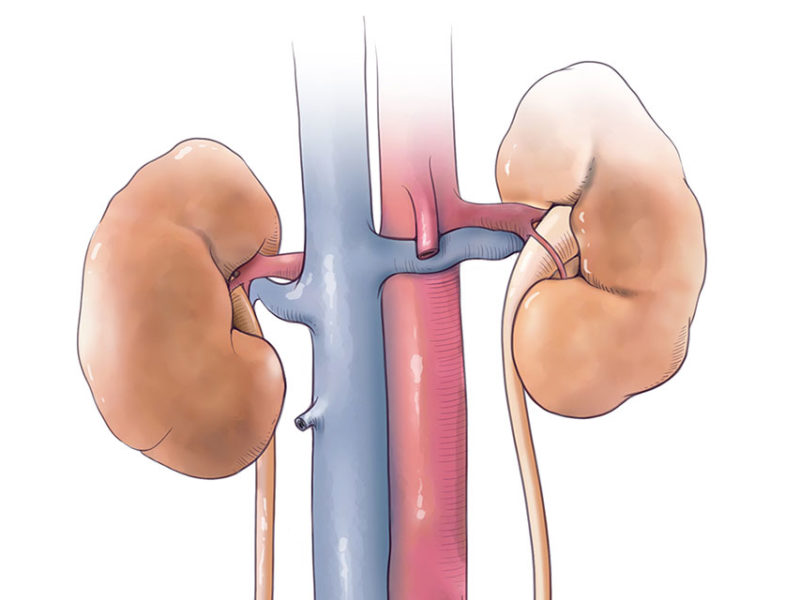Novel Roles of the Urothelium in the Development of Congenital Anomalies of the Kidney and Urinary Tract
Novel Roles of the Urothelium in the Development of Congenital Anomalies of the Kidney and Urinary Tract https://pediatricsnationwide.org/wp-content/themes/corpus/images/empty/thumbnail.jpg 150 150 Lauren Dembeck Lauren Dembeck https://pediatricsnationwide.org/wp-content/uploads/2021/03/Dembeck_headshot.gif- January 07, 2021
- Lauren Dembeck
In addition to genetic defects, interactions of the developing urothelium with its underlying mesenchyme and superficial plaque may contribute to congenital anomalies of the kidney and urinary tract.
Congenital anomalies of the kidney and urinary tract (CAKUTs) are the leading cause of chronic and end-stage kidney disease in children. Collaborative translational research at Nationwide Children’s Hospital and at research centers across the globe has yielded a growing base of evidence that urothelial abnormalities and variations in genes important for urothelial development have causal relationships with CAKUTs.
Ashley Jackson, PhD, Christina Ching, MD, Kirk McHugh, PhD, and Brian Becknell, MD, PhD, investigators in the Nephrology and Urology Research Affinity Group and the Center for Clinical and Translational Research at the Abigail Wexner Research Institute at Nationwide Children’s, recently reviewed the literature on the roles of the urothelium in normal and aberrant urinary tract development. Their review article was published in Nature Reviews Urology and is a testament to the collaborative nature of this group’s working relationship.
“At our Center for Clinical and Translational Research, we have a unique mixture of researchers working alongside one another — basic scientists and clinicians, and even within the clinicians, both nephrology and urology specialists,” says Dr. Ching, a member of the Department of Pediatric Urology at Nationwide Children’s Hospital. “We are able to conduct basic science with a detailed mechanistic evaluation of the urinary tract and develop ways to use that information clinically.”
The recent review found accumulating evidence that the developing urothelium, which when fully formed is the tightest barrier of all human epithelia, interacts with underlying mesenchyme. These interactions have critical roles in developmental patterning of the bladder and ureter and, ultimately, in the development of CAKUTs. The urothelium also has a superficial layer of urothelial plaque, comprised of uroplakins, that aids in patterning the urinary tract. Disrupted plaque synthesis leads to aberrant urothelial development, which can directly cause CAKUTs.
“Trainees in urology are taught that the urothelium of the upper and lower urinary tract is fairly homogeneous,” says Dr. Ching. “Through recent work and specifically work headed by Dr. Jackson’s lab, we now know this is not the case. The urothelium looks different depending on where you are in the urinary tract with potentially unique roles specific to its location.”
Contemporary findings suggest that morphological alterations in the intrarenal urothelium and changes in urothelial plaque production are responsible for maintaining renal structure and function during congenital urinary-tract obstruction, driving intrarenal urothelial remodeling to stabilize the obstructed kidney and limit renal injury.
“It makes sense that an obstructed kidney would adapt a bladder-like urothelial lining,” says Dr. Jackson. “While we work to understand the mechanisms that facilitate this protective adaptation, Dr. Ching is translating these findings – searching for diagnostic and prognostic urine biomarkers in her patients with ureteropelvic junction obstruction.”
Other aspects examined in the review include the convergence of data from gene deletion studies in animal models and genetic variants found in human patients as well as current urothelial biomarkers of CAKUT, such as radiologic findings of renal pelvic uroepithelial thickening and urinary IL-5 and eotaxin.
“In developmental biology, we talk constantly about reciprocal interactions, and I think that’s exactly what our Nephrology and Urology Research Affinity Group facilitates from a scientific perspective on a daily basis,” says Dr. Jackson. “Bringing basic scientists together with the clinicians that treat these patient populations allows us to do our best science from a translational perspective – collectively working toward improving outcomes for all children with kidney disease.”
Reference:
Jackson AR, Ching CB, McHugh KM, Becknell B. Roles for urothelium in normal and aberrant urinary tract development. Nat Rev Urol. 2020 Aug;17(8):459-468. doi: 10.1038/s41585-020-0348-2. Epub 2020 Jul 9. PMID: 32647226.
Image Credit: Nationwide Children’s
About the author
Lauren Dembeck, PhD, is a freelance science and medical writer based in New York City. She completed her BS in biology and BA in foreign languages at West Virginia University. Dr. Dembeck studied the genetic basis of natural variation in complex traits for her doctorate in genetics at North Carolina State University. She then conducted postdoctoral research on the formation and regulation of neuronal circuits at the Okinawa Institute of Science and Technology in Japan.
- Lauren Dembeckhttps://pediatricsnationwide.org/author/lauren-dembeck/
- Lauren Dembeckhttps://pediatricsnationwide.org/author/lauren-dembeck/
- Lauren Dembeckhttps://pediatricsnationwide.org/author/lauren-dembeck/
- Lauren Dembeckhttps://pediatricsnationwide.org/author/lauren-dembeck/January 29, 2019
- Posted In:
- In Brief







